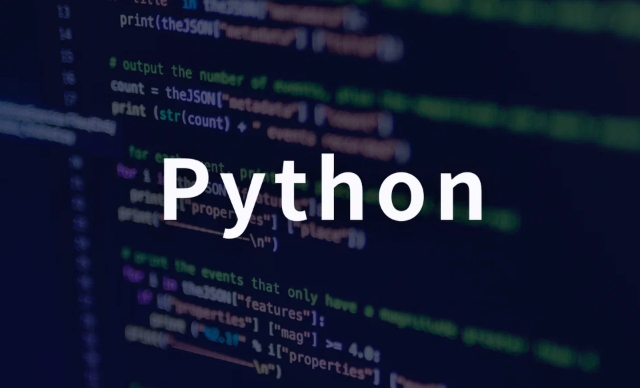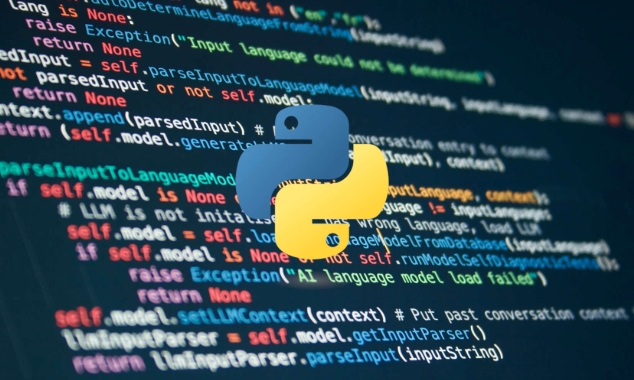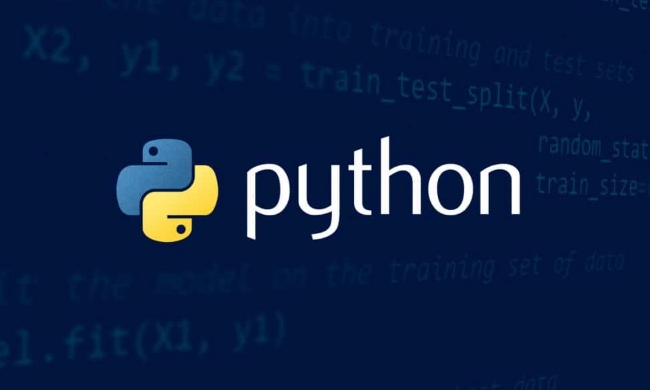Python Weak References Usage
Weak reference is a method of object reference in Python that does not increase the reference count, allowing objects to be garbage collected when there is no strong reference. It is suitable for scenarios such as cache, observer pattern, resource management, and circular reference avoidance. 1. Weak references are implemented through the weakref module, such as weakref.ref() to create callable weak reference objects; 2. WeakValueDictionary is used as a dictionary with weak reference values, suitable for caching systems; 3. WeakKeyDictionary uses weak references as keys to facilitate tracking the life cycle of the object. Note when using: immutable types do not support weak references. When calling weak references, you need to check whether they are None, weak references are not serializable, and they are only used when the object life cycle cannot be controlled.

In Python programming, Weak References is an overlooked but very practical feature. It allows you to reference an object without increasing its reference count, thus avoiding the object being garbage collected due to references. This is especially useful in scenarios such as cache, observer pattern, or avoiding circular references.

What is a weak reference?
Simply put, weak references do not prevent objects from being destroyed . Normally, when you assign an object to another variable, Python increases the reference count of that object. The object is recycled by the garbage collector only when the reference count is zeroed.
Weak references created using the weakref module will not increase the reference count. Once the original object has no other strong references, it will be recycled and weak references will automatically become None .

When should we use weak quotes?
Weak references are suitable for situations where you want to "observe" an object but don't want to affect its life cycle. Common scenarios include:
- Caching system : Want to cache objects but not prevent them from being recycled
- Observer mode : Avoid strong reference cycles between the observer and the observed
- Resource management : track resource usage without interfering with resource release
For example: If you implement a cache, if the objects in the cache are always referenced, they will never be released, which may lead to excessive memory usage. Using weak references can avoid this problem.

How to use weakref?
The weakref module in the Python standard library provides basic weak reference support. The most commonly used are weakref.ref() and weakref.WeakKeyDictionary / WeakValueDictionary .
1. Use weakref.ref
import weakref
class MyClass:
def __init__(self, name):
self.name = name
obj = MyClass("Test")
wref = weakref.ref(obj)
print(wref()) # <__main__.MyClass object at 0x...>
del obj
print(wref()) # None Here wref is a weak reference, and when the original object obj is deleted, it returns None .
2. Use WeakValueDictionary
This dictionary will automatically remove key-value pairs corresponding to the values that have been recycled, which is very suitable for caching:
import weakref
class CacheObj:
def __init__(self, key):
self.key = key
cache = weakref.WeakValueDictionary()
a = CacheObj("a")
cache["a"] = a
print("a" in cache) # True
del a
print("a" in cache) # False 3. Use WeakKeyDictionary
Similar to WeakValueDictionary , but the key is a weak reference, suitable for observing the life cycle of an object:
import weakref
class Observer:
pass
obs = Observer()
callbacks = weakref.WeakKeyDictionary()
callbacks[obs] = lambda: print("Updated") When obs is deleted, the corresponding key-value pair will also be automatically cleared from the dictionary.
Notes and FAQs
- Not all objects can be weakly referenced : for example, immutable types such as integers and strings do not support weak references by default. Custom classes require explicit support (not problem in most cases).
- Be careful when using
wref()to get an object, check whether it isNone. - Weak references cannot be serialized directly : for example, we cannot use
pickleto serialize weak reference objects. - Avoid misuse : If you just want to refer to an object temporarily, a normal reference is enough. Weak references are more suitable for use when you cannot control the life cycle of an object.
Basically that's it. Although weak references are not used much, they can solve some subtle memory problems if used correctly. Understanding its working mechanism can prevent circular references or memory leaks when appropriate, especially when building large systems or frameworks.
The above is the detailed content of Python Weak References Usage. For more information, please follow other related articles on the PHP Chinese website!

Hot AI Tools

Undress AI Tool
Undress images for free

Undresser.AI Undress
AI-powered app for creating realistic nude photos

AI Clothes Remover
Online AI tool for removing clothes from photos.

Clothoff.io
AI clothes remover

Video Face Swap
Swap faces in any video effortlessly with our completely free AI face swap tool!

Hot Article

Hot Tools

Notepad++7.3.1
Easy-to-use and free code editor

SublimeText3 Chinese version
Chinese version, very easy to use

Zend Studio 13.0.1
Powerful PHP integrated development environment

Dreamweaver CS6
Visual web development tools

SublimeText3 Mac version
God-level code editing software (SublimeText3)
 How to handle API authentication in Python
Jul 13, 2025 am 02:22 AM
How to handle API authentication in Python
Jul 13, 2025 am 02:22 AM
The key to dealing with API authentication is to understand and use the authentication method correctly. 1. APIKey is the simplest authentication method, usually placed in the request header or URL parameters; 2. BasicAuth uses username and password for Base64 encoding transmission, which is suitable for internal systems; 3. OAuth2 needs to obtain the token first through client_id and client_secret, and then bring the BearerToken in the request header; 4. In order to deal with the token expiration, the token management class can be encapsulated and automatically refreshed the token; in short, selecting the appropriate method according to the document and safely storing the key information is the key.
 Explain Python assertions.
Jul 07, 2025 am 12:14 AM
Explain Python assertions.
Jul 07, 2025 am 12:14 AM
Assert is an assertion tool used in Python for debugging, and throws an AssertionError when the condition is not met. Its syntax is assert condition plus optional error information, which is suitable for internal logic verification such as parameter checking, status confirmation, etc., but cannot be used for security or user input checking, and should be used in conjunction with clear prompt information. It is only available for auxiliary debugging in the development stage rather than substituting exception handling.
 What are python iterators?
Jul 08, 2025 am 02:56 AM
What are python iterators?
Jul 08, 2025 am 02:56 AM
InPython,iteratorsareobjectsthatallowloopingthroughcollectionsbyimplementing__iter__()and__next__().1)Iteratorsworkviatheiteratorprotocol,using__iter__()toreturntheiteratorand__next__()toretrievethenextitemuntilStopIterationisraised.2)Aniterable(like
 What are Python type hints?
Jul 07, 2025 am 02:55 AM
What are Python type hints?
Jul 07, 2025 am 02:55 AM
TypehintsinPythonsolvetheproblemofambiguityandpotentialbugsindynamicallytypedcodebyallowingdeveloperstospecifyexpectedtypes.Theyenhancereadability,enableearlybugdetection,andimprovetoolingsupport.Typehintsareaddedusingacolon(:)forvariablesandparamete
 How to iterate over two lists at once Python
Jul 09, 2025 am 01:13 AM
How to iterate over two lists at once Python
Jul 09, 2025 am 01:13 AM
A common method to traverse two lists simultaneously in Python is to use the zip() function, which will pair multiple lists in order and be the shortest; if the list length is inconsistent, you can use itertools.zip_longest() to be the longest and fill in the missing values; combined with enumerate(), you can get the index at the same time. 1.zip() is concise and practical, suitable for paired data iteration; 2.zip_longest() can fill in the default value when dealing with inconsistent lengths; 3.enumerate(zip()) can obtain indexes during traversal, meeting the needs of a variety of complex scenarios.
 Python FastAPI tutorial
Jul 12, 2025 am 02:42 AM
Python FastAPI tutorial
Jul 12, 2025 am 02:42 AM
To create modern and efficient APIs using Python, FastAPI is recommended; it is based on standard Python type prompts and can automatically generate documents, with excellent performance. After installing FastAPI and ASGI server uvicorn, you can write interface code. By defining routes, writing processing functions, and returning data, APIs can be quickly built. FastAPI supports a variety of HTTP methods and provides automatically generated SwaggerUI and ReDoc documentation systems. URL parameters can be captured through path definition, while query parameters can be implemented by setting default values for function parameters. The rational use of Pydantic models can help improve development efficiency and accuracy.
 How to test an API with Python
Jul 12, 2025 am 02:47 AM
How to test an API with Python
Jul 12, 2025 am 02:47 AM
To test the API, you need to use Python's Requests library. The steps are to install the library, send requests, verify responses, set timeouts and retry. First, install the library through pipinstallrequests; then use requests.get() or requests.post() and other methods to send GET or POST requests; then check response.status_code and response.json() to ensure that the return result is in compliance with expectations; finally, add timeout parameters to set the timeout time, and combine the retrying library to achieve automatic retry to enhance stability.
 Setting Up and Using Python Virtual Environments
Jul 06, 2025 am 02:56 AM
Setting Up and Using Python Virtual Environments
Jul 06, 2025 am 02:56 AM
A virtual environment can isolate the dependencies of different projects. Created using Python's own venv module, the command is python-mvenvenv; activation method: Windows uses env\Scripts\activate, macOS/Linux uses sourceenv/bin/activate; installation package uses pipinstall, use pipfreeze>requirements.txt to generate requirements files, and use pipinstall-rrequirements.txt to restore the environment; precautions include not submitting to Git, reactivate each time the new terminal is opened, and automatic identification and switching can be used by IDE.







